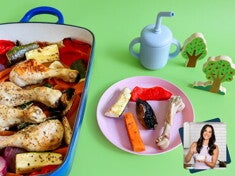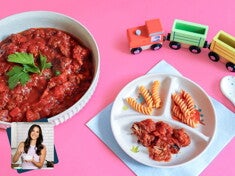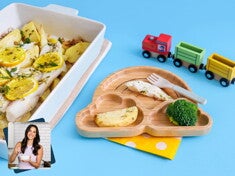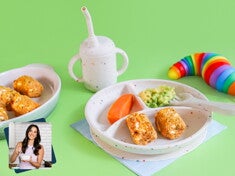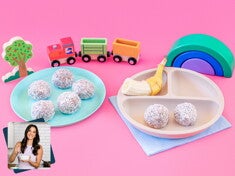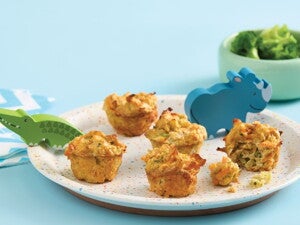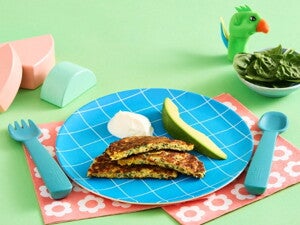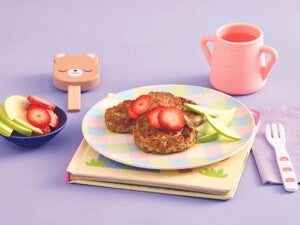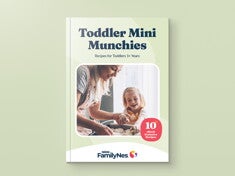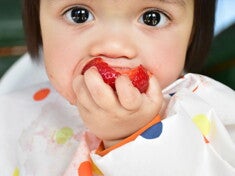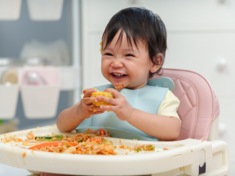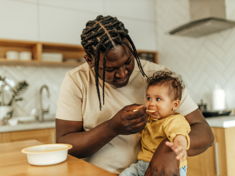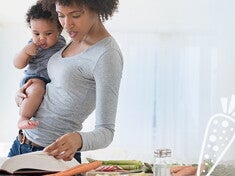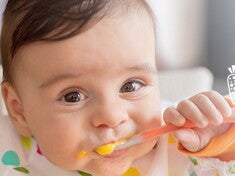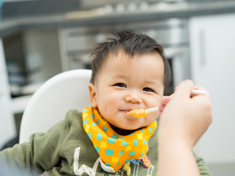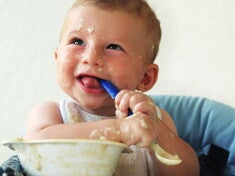
BLW Recipes
Looking for our best baby-led weaning recipes to help your little one explore solid foods with confidence? From BLW breakfast ideas to easy BLW dinner ideas, we’ve got nutritious and delicious meals for any mealtime. Discover a variety of BLW foods designed to encourage self-feeding and healthy eating habits. Whether you need quick BLW ideas or wholesome BLW recipes, explore our collection to make mealtime fun and stress-free.
NEW BLW Recipes by Marika Day
Other BLW recipes
Get more BLW ideas with our recipe books
Need more meal inspiration for your little one? Our toddler and baby recipe books are packed with wholesome family-friendly recipes. Whether you need quick snack ideas or complete meal plans, you’ll find nutritious options tailored to your baby’s food journey.
Sign up or log in to Nestlé FamilyNes to access our free recipe books, featuring easy meal ideas to support your baby’s transition to solids with confidence.
Navigating baby-led weaning: Tips, guides & more
Curious about baby-led weaning but not sure where to start? Wondering which BLW foods are best or how to create balanced meals? Navigating this stage can feel overwhelming, but we’ve got tips, meal ideas and easy-to-follow guides to help you navigate this exciting stage with confidence. Explore our articles to learn more and make your baby’s transition to solids fun, safe and stress-free.
When is my baby ready for BLW?
Your baby is ready for solid foods at around six months old, and when they show these key signs of readiness:
1. Sits upright – Your baby should be able to sit steadily, with some support, maintaining good head and neck control.
2. Loss of tongue-thrust reflex – If they no longer automatically push food out of their mouth with their tongue, they’re ready to explore solids.
3. Shows interest in food – If they watch you eat, reach for food, or try to grab what’s on your plate, they may be eager to start.
4. Can grasp objects – The ability to pick up food and bring it to their mouth, using a palmar or pincer grasp, is essential for self-feeding.
5. Can chew and swallow – Even without teeth, babies can mash soft foods with their gums. They should be able to move food to the back of their mouth and swallow it safely.
If your baby meets these milestones, they may be ready for baby led weaning! As every baby develops at different rates, check with your healthcare professional before introducing solids earlier than 6 months or if you have any concerns, especially if your baby was born prematurely or has any health concerns.
Tips for introducing your little one to BLW
Start with very soft, safe foods
Choose BLW foods that are easy to grasp and mash with gums, such as steamed vegetables (carrot, sweet potato), ripe fruits (banana, avocado), and soft proteins (scrambled egg, shredded chicken). Cut foods into finger-length strips to make them easier for your baby to hold.
Follow your baby’s lead
Let your baby explore food at their own pace. BLW is about self-feeding, so avoid pressuring them to eat a certain amount. Most of their nutrition before they are 12 months old will still come from their milk feeds (breast milk or baby formula). Expect some mess—it's all part of the learning process!
Prioritise safety
Always supervise mealtimes and avoid choking hazards like whole grapes, nuts, or tough meats.
Explore our BLW checklist for more tips.
BLW Recipes FAQs
What are the best foods to start BLW?
Very soft, easy-to-grasp foods are ideal for baby-led weaning. Steamed vegetables like carrots and sweet potatoes, ripe fruits such as bananas and avocados, and soft proteins like shredded chicken and scrambled eggs provide essential nutrients.
What is the BLISS method of baby-led weaning?
The BLISS method (Baby-Led Introduction to Solids) is a modified version of baby-led weaning, developed by researchers in New Zealand. This method encourages offering nutrient-dense foods alongside traditional BLW options to support growth and development. It also emphasises minimising choking hazards by ensuring foods are soft, appropriately sized, and easy for babies to handle.
What is the squish test for BLW?
The squish test is a simple way to check if a food is soft enough for a baby to squash with their gums and swallow. To do this, press the food between your fingers. If it easily squishes with light pressure, it’s safe for baby-led weaning. If it remains firm or requires force to break down, it may be too hard and could pose a choking risk. This test ensures that foods are appropriate for babies who may not have teeth, but can still chew with their gums.


